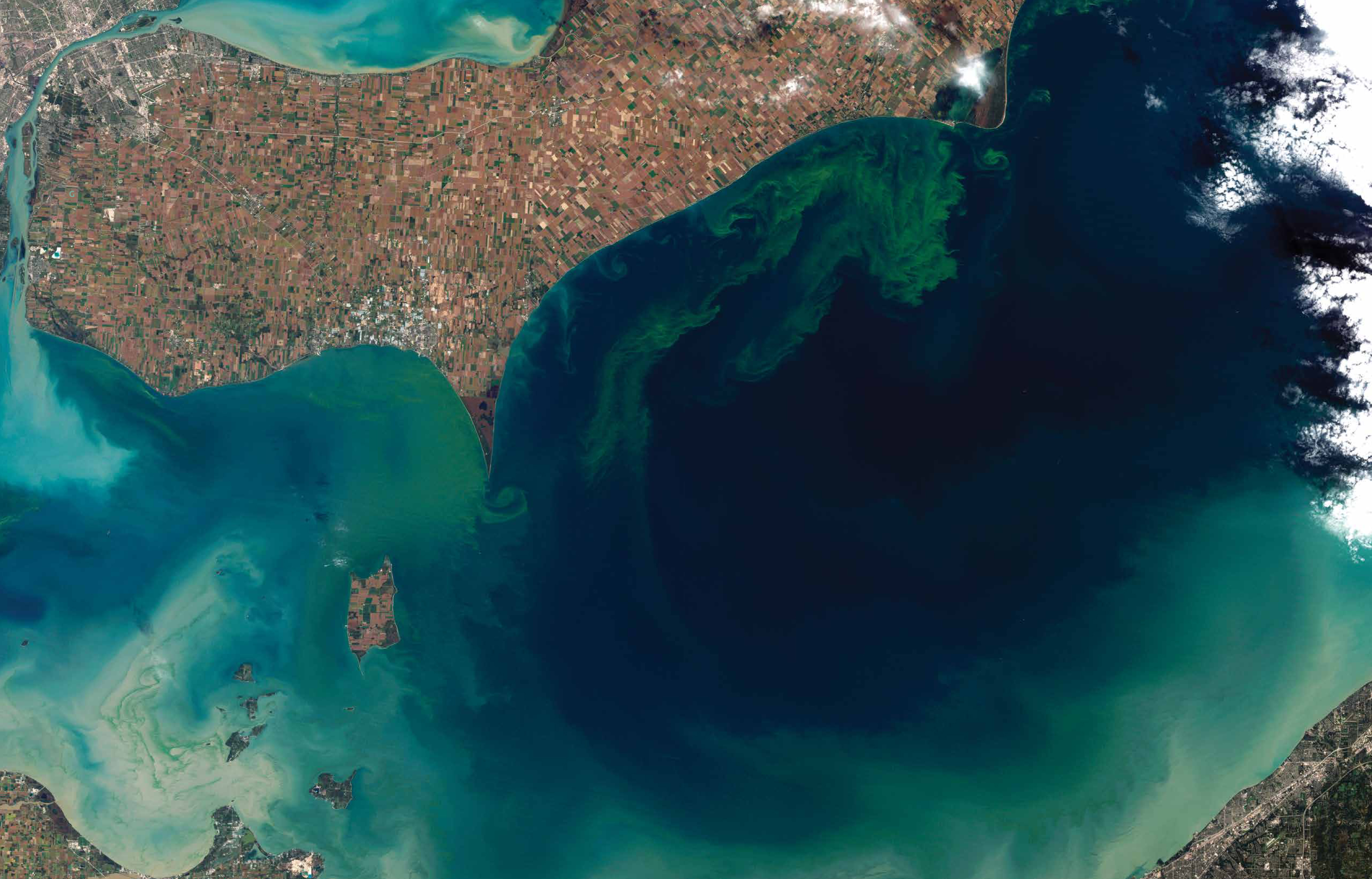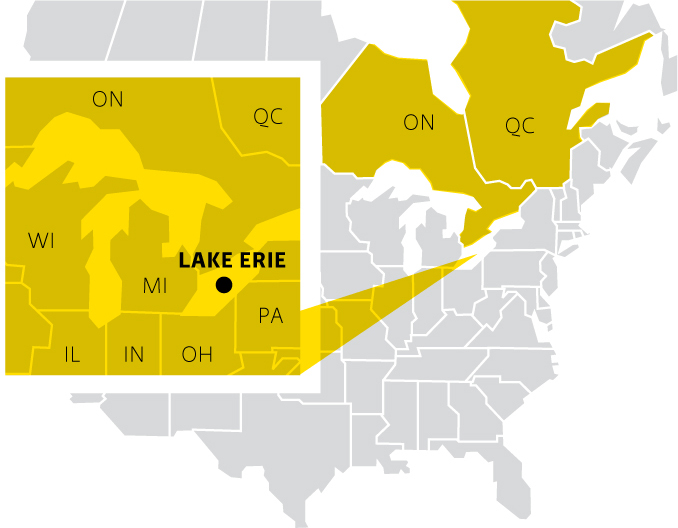16.1 Brought back from the brink in the 1970s, pollution threatens Lake Erie once again
| CHAPTER 16 | WATER POLLUTION |
RESCUING THE GREAT LAKES
278
279

CORE MESSAGE
Water pollution decreases our usable water supplies, harms wildlife and human life, and is largely caused by human actions. Some types of pollution may be easier to address than others, but we can decrease pollution by protecting water bodies, restoring forested areas, and limiting the use of potential pollutants.
GUIDING QUESTIONS
After reading this chapter, you should be able to answer the following questions:
 How do we define water pollution and what are some common types of pollutants?
How do we define water pollution and what are some common types of pollutants? What is the difference between point source and non-point source water pollution and what are some common examples of each source?
What is the difference between point source and non-point source water pollution and what are some common examples of each source? What are some of the consequences of water pollution?
What are some of the consequences of water pollution? What is a watershed and how does the quality of the watershed and its riparian areas affect the quality of surface waters and the quantity of groundwater supplies?
What is a watershed and how does the quality of the watershed and its riparian areas affect the quality of surface waters and the quantity of groundwater supplies? How can water quality be assessed and what can be done to reduce point source and non-point source water pollution?
How can water quality be assessed and what can be done to reduce point source and non-point source water pollution?
280
It was supposed to be an uneventful trip around Lake Ontario, collecting water samples to determine how the lake was doing. It was a trip Sue Watson and her colleagues, research scientists at Environment Canada, make several times a year, spending most of their summers on a research vessel that visits both Lake Ontario and adjacent Lake Erie, the shallowest, southernmost, and smallest of the Great Lakes. Mostly, the data they collected were routine—samples showed the water was relatively healthy. But over Labour Day in 2012, Watson got some news that made this trip anything but routine.
There had been a massive fish kill along the northern shore of Lake Erie, she learned—a rotten, putrid smell was emanating from the beaches and the lake, and decaying fish corpses were piling up on the shorelines. She asked a colleague to visit the site, and he reported back that whatever was happening was killing all types of fish, indiscriminate of age or species. And one more thing: “I’m seeing the beginning of a massive algal bloom here,” he told her.
When Watson arrived at Lake Erie two weeks later, she saw a disturbing sight.
“This was the first time I’d ever seen an algal bloom that stretched from Point Stanley, in the middle of the north shore, all the way into Long Point Bay,” she recalls. “It was probably 10 kilometres wide.”
This was not supposed to happen in Lake Erie. Decades earlier, such a sight would have been commonplace, as unprecedented levels of algae and toxic chemicals made the lake a poster child for environmental destruction. In response, the Canadian and U.S. governments investigated the situation and developed new laws to restrict pollution. This was largely successful, and the waters of Lake Erie became clear once again. People returned to its shorelines in droves to sun, swim, and sport fish. But now the algae were back, and pollutants were once again infiltrating the lake. What was going on?
WHERE IS LAKE ERIE?
